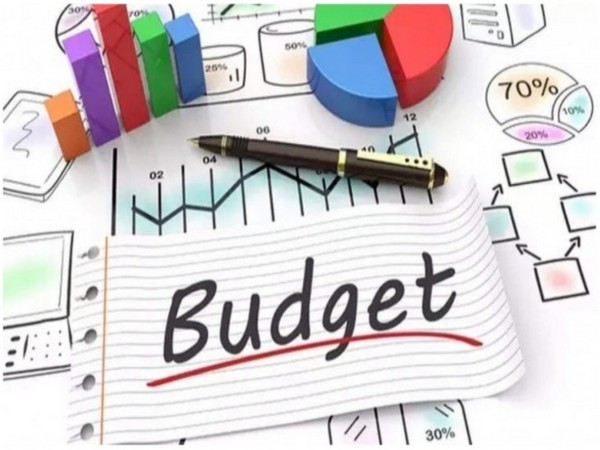
For India Inc, there couldn’t have been a more opportunely positioned Budget as Finance Minister Nirmala Sitharaman’s 2023-24. From the emphasis on green growth in today’s Union Budget across green energy, green building and electric vehicles aligned with India’s commitment towards net zero to the focus on refining banking and financial markets through technologyled initiatives to specialized resource centres to educate the youth of the country and reap the demograhic dividend, Budget 2023 is in line with an idea whose time has come.
With priority capital investments allocation towards energy transition, the target of 5MMT annual production of green hydrogen by 2030 and notification of green credit programme, India would seem to have forged ahead on the path of green inclusivity. The Budget targets an annual production of 5 MMT under Green Hydrogen Mission by 2030 to facilitate transition of the economy to low carbon intensity and to reduce dependence on fossil fuel imports muscled by a ₹35000 crore outlay for energy security, energy transition and net zero objectives. Importantly, there is a Rs 20,700 crore outlay provided for renewable energy grid integration and evacuation from Ladakh.
“The emphasis on green growth in today’s Union Budget – across sectors such green energy, green farming, green building, green equipment – is aligned with India’s commitment towards NDC targets,” says Subhrakant Panda, President, FICCI. The priority to green growth in this year’s budget comes at a time when sustainability and steps towards net zero carbon emissions have become India’s imperitive and an important pillar of its strategy to reduce the carbon intensity of the economy and promote green fuel, green energy and green mobility among other practices. Hiranmay Mallick, CEO & Co-Founder at Tummoc, a public transit app sees the plan for green credit programme as a part of this initiative as one that will encourage and incentivize sustainable choices in an otherwise majorly non-sustainable corporate world.
“Mass transition to public transport as a primary mode of commute will indeed play its role towards reducing carbon emissions,” says Mallick. As part of the green plan, 500 new ‘waste to wealth’ plants under GOBARdhan (Galvanizing Organic Bio-Agro Resources Dhan) scheme will be established for promoting circular economy at total investment of Rs 10,000 crore and 5 per cent compressed biogas mandate to be introduced for all organizations marketing natural and bio gas.
The Budget initiatives on sustainability and decarbonisation and increased focus on hydrogen, ethanol blending, bio gas, electric vehicles and battery storage are also critically aligned to the auto industry. Vinod Aggarwal, President, SIAM points out that while the 33 per cent increase in capital outlay with an effective provision of Rs 13.7 lakh crore will result in a positive impact on the auto sector, the announcement for funding various Government Departments for replacement of old vehicles was also commendable.
The Budget has also extended the subsidy on EV batteries which will support green mobility and innovation in the automobile sector, says Hitesh Garg, India Country Manager of NXP Semiconductors. In line with green targets, the Budget has relaxed import duties of Lithium ion batteries which will help in price reduction of EVs, thus make it affordable for the masses. “Furthermore, the viability gap funding announced to support the battery energy storage systems, along with a framework of pumped storage projects, is designed to reduce the revenue required to recover costs and offer better returns, especially for the Private sector,” says Anshul Gupta, Managing Director, Okaya Electric Vehicles.
There are other spinoff effects from the budgetary capital outlay of Rs 10 lakh crore in infra spending which will aid CV sales while the reduction in individual tax slabs is seen as benefiting the ailing entry level 2Wheeler and passenger vehicle segment and the reduction in highest tax surcharge from 37% to 25% boosting luxury vehicle sales, according to FADA President Manish Raj Singhania. “Being part of the MSME universe, cost of credit guarantee will reduce by 1% thus helping auto dealers in raising funds,” says Singhania.
The Budget has also aimed to stimulate an effective AI ecosystem and nurture quality human resources in the field of technology with provision for three centers of excellence for artificial intelligence to enable ‘Make AI for India’ and ‘Make AI work for India’ will. This will also boost the public-private partnership in conducting research and developing cutting-edge applications and scalable solutions across industries.
The Fintech sector will gain a roadmap for further growth and development in the industry. The adoption of an one stop solution for reconciliation and updation of identity and address of individuals using DigiLocker service and Aadhaar as foundational identity, as the Budget suggests, is a risk based approach for KYC and a system that will ensure measures taken to control potential financial crimes are in line with the risks identified, according to Nageen Kommu, CEO, Digitap.
The digital leap by the Budget includes launch of iGOT Karmayogi, an integrated online training platform to provide continuous learning opportunities for lakhs of government employees to upgrade their skills and facilitate people-centric approach. For start-ups, the Budget extends incorporation benefits to 10 years which will further boost sentiment and encourage entrepreneurship in the country.
All this will get a further fillip with a National Data Governance Policy to be brought out to unleash innovation and research by startups and academia and 100 labs are to be set up for 5G services based application development to realize a new range of opportunities, business models, and employment potential. Even the textile sector is looking to gain from the green growth mission which will help the textile industry to get quality raw material.
Also, being one of the biggest polluting sectors, initiatives such as bio inputs research centre and cluster based approach with public private partnership model will help the textile sector to grow as far as cotton and other natural crops are concerned, says Pratik Gadia, Founder & CEO, The Yarn Bazaar a holistic B2B online marketplace for yarn in India which enables textile companies to discover bonafide yarn prices. Sitharaman has coupled education and skilling and pushed a focus on industry-ready training with an initiative to establish three centres of excellence in top educational institutions to nurture quality human resources in AI.
With a national education policy in place, this will facilitate job creation at large scale alongwith a timely focus on a unified Skill India Digital platform to be launched for enabling demand-based formal skilling, linking with employers including MSMEs, and facilitating access to entrepreneurship schemes.
“The Pradhan Mantri Kaushal Vikas Yojana 4.0 scheme is an exceptional project to expand skill training in areas like coding, AI, robotics, mechatronics, IOT, 3D printing, drones, and soft skills,” says Sayeed Anjum, Cofounder & CTO, greytHR. Besides, direct benefit transfer under a pan-India national apprenticeship promotion scheme will be rolled out to provide stipend support to 47 lakh youth in three years and 30 new skill India International centres will be set up across different states to skill youth for international opportunities.
“This will help professionals from varied sectors but also MSMEs and start-ups who look for relevant candidates to do the work,” says Anjum. A significant takeaway from the Budget is catapulting the tourism sector on a mission mode.
As a major engine of economic growth and an important source of foreign exchange earnings in India, the focus on development of tourism infrastructure is timely as hotel occupancy rate has improved from 30-32 per cent in April 2021 to 68-70 per cent in November 2022 and the sector is showing signs of revival, with foreign tourist arrivals in India in FY23 growing month-on-month with resumption of scheduled international flights and easing of Covid-19 regulations.
At least 50 tourist destinations will be selected through challenge mode, to be developed as a complete package for domestic and foreign tourists and sector specific skilling and entrepreneurship development will be dovetailed to achieve the objectives of the ‘Dekho Apna Desh’ initiative. Tourism infrastructure and amenities will be facilitated in border villages through the Vibrant Villages Programme, as directed by the Budget.nn















